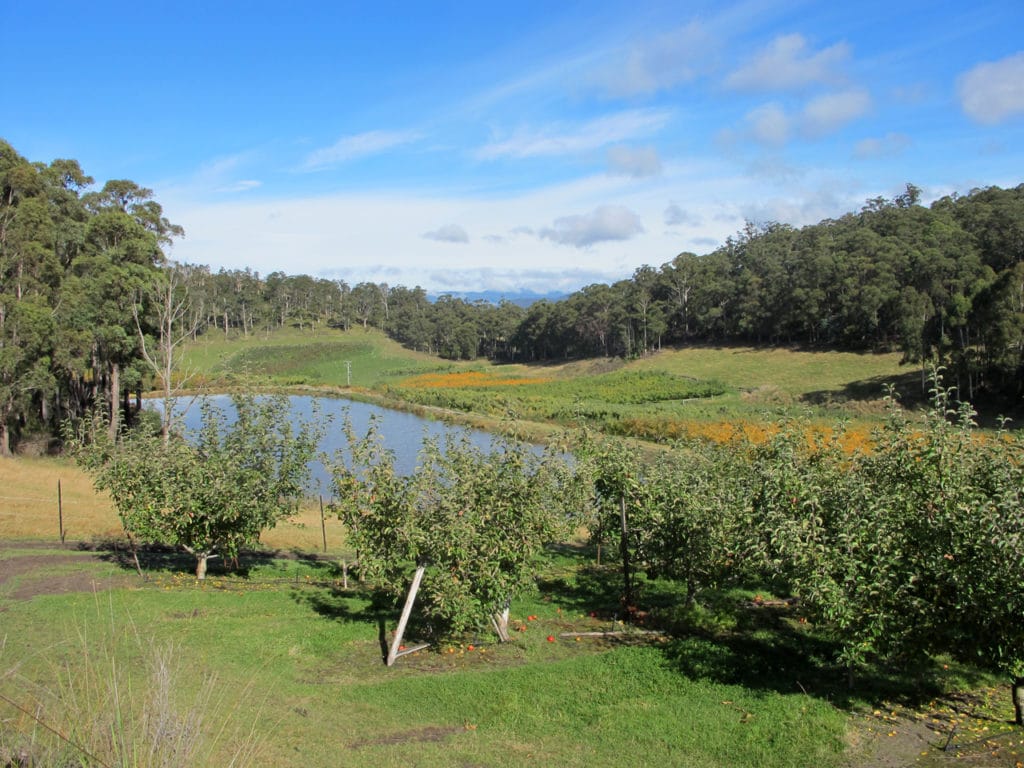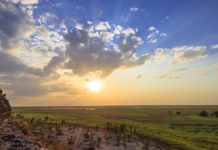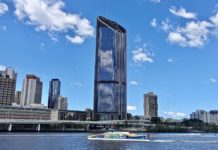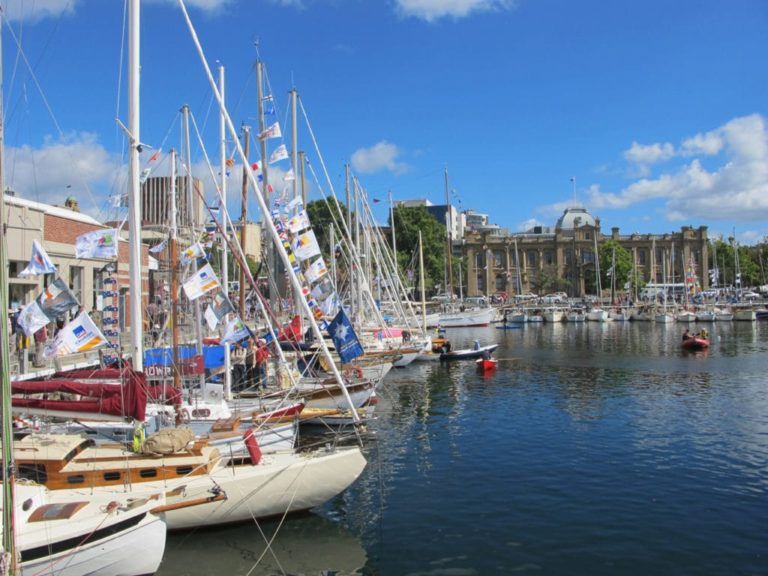
Hobart, the capital city of Tasmania, is a place of stark natural beauty, rich history, and vibrant culture. Nestled on the Derwent River and shadowed by the imposing Mount Wellington, Hobart offers a unique blend of the 19th-century charm with a modern lifestyle. You will not lack ideas for outings and activities. This guide explores the must-visit spots and experiences in Hobart for any traveler.
Table of Contents
History of Hobart
Formerly called Van Diemen’s Land, the city was born when 35 convicts and a dozen soldiers were sent there to create a penal colony and prevent the arrival of the French. It was under the direction of Colonel David Collins, 1st Governor of the island of Tasmania, that the foundations of the very first building of the city of Hobart were laid in 1804. This pretty town therefore once served, – like the rest of the island – as a place of “holiday” for the prisoners since it was the main penal colony of the country.
This colony soon went out of control. The food was so poor that Lieutenant Colonel Collins was forced to release prisoners to go kangaroo hunting! Other detainees escaped and became bushrangers, regularly terrifying small villages. Nevertheless, the city managed to become prosperous in the 1830s with the arrival of whalers.
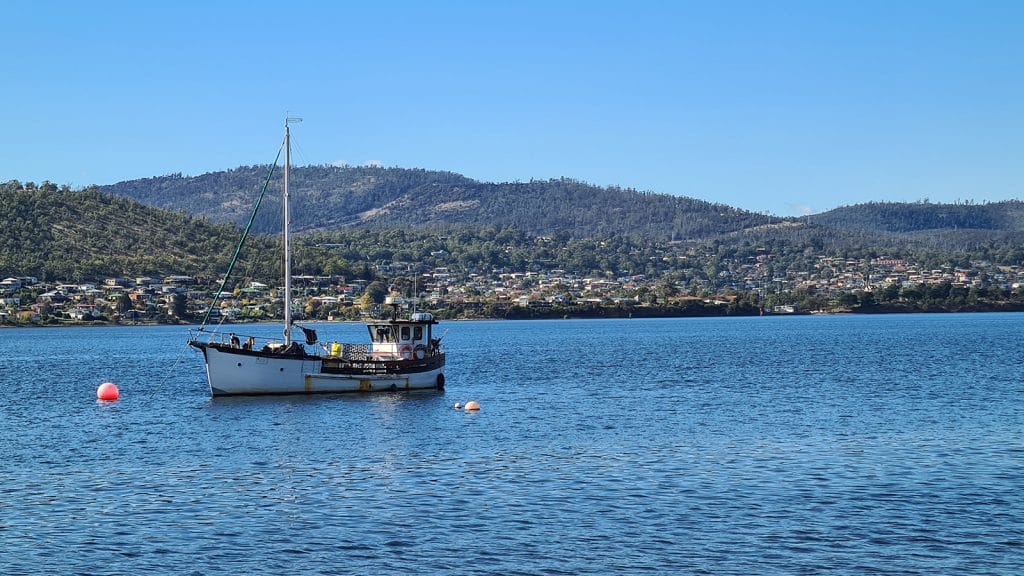
When to visit Hobart?
Due to its geographical location, the climate in Hobart is much cooler than in the rest of Australia. Hobart experiences four distinct seasons, each with its own beauty and charm. The maximum average temperature is 21°C in summer and 12°C throughout the year.
Summer (December – February)
During the summer in Hobart, average temperatures range between 11.5 and 21°C. January and February are the driest months and the beaches are warm enough for swimming.
Fall (March – May)
Autumn has many calm and sunny days, with average temperatures between 8.9 and 17.3°C. During this season, the city is blanketed in red and yellow hues as the trees begin to change.
Winter (June – August)
In winter, the island receives southern Antarctic winds and experiences some of the coolest temperatures in Australia. Mount Wellington is dotted with snow and average daily temperatures range from 5°C to 12.3°C. Nighttime temperatures can drop by as much as 3°C.
Spring (September – November)
In spring, average temperatures range from 7.8 to 16.9°. It is the wettest time of the year (168.7 mm), even if Hobart remains the second driest capital of Australia (after Adelaide).
In summary, the best time to visit Hobart is during the Australian summer (December to February) when the weather is warm and festivals are abundant. However, spring (September to November) and autumn (March to May) also offer pleasant temperatures and fewer crowds.
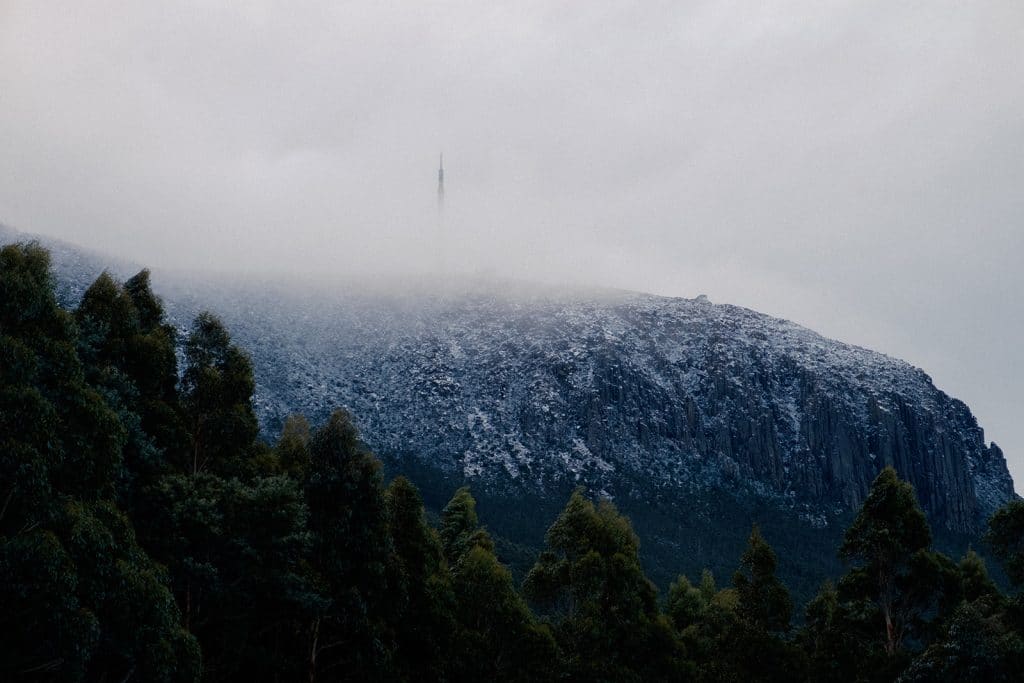
What to do & see in Hobart
Established in 1804, Hobart retains its Georgian and Victorian architecture—especially around Salamanca Place and Battery Point.
Battery Point
Stroll the Streets: Cobbled lanes and heritage cottages dating to the early 19th century.
Key Spots: Arthur Circus’s quaint circular street, St. George’s Anglican Church (1828), and cosy cafés on Hampden Road.

Salamanca Market
When: Saturdays, 8:30 am–3 pm (except winter solstice weekend).
Highlights: Over 300 stalls selling Tasmanian produce, artisan crafts, street food and live entertainment.
Insider Tip: Arrive by 9 am to beat the crowds and sample freshly shucked oysters at the waterfront stalls.
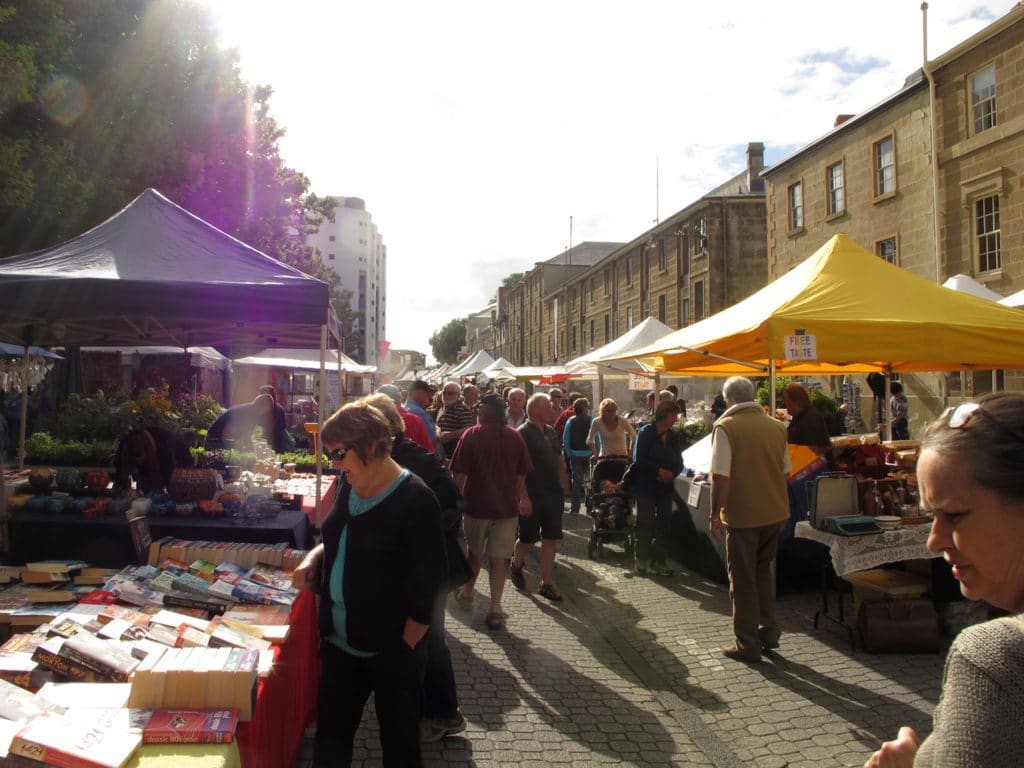
MONA – Museum of Old and New Art
What It Is: David Walsh’s subterranean museum blends antiquities with provocative contemporary installations.
How to Get There: 30-minute ferry from Brooke Street Pier (return AUD 45; includes museum entry).
Tip: Book “Mona After Dark” (first Friday monthly) for live music, food trucks and late-night exhibit access.
Tasmanian Museum and Art Gallery
Exhibits: Aboriginal heritage, convict history, natural sciences and contemporary Tasmanian art.
Hours & Admission: Open 10 am–5 pm daily; free entry (special exhibitions may incur a charge).
Royal Tasmanian Botanical Garden
Established in the 19th century, these gardens are a tranquil escape from the city bustle. Located on the Tasman Highway (2km from the city centre), this park has more than 6,000 plant species, a Japanese garden and a sub-Antarctic house that reproduces the climate and vegetation of Macquarie Island (half way between Tasmania and Antarctica).
Salamanca Arts Centre & Theatre Royal
Salamanca Arts Centre: Galleries, studios, workshops—check the schedule for rotating exhibitions and artist talks.
Theatre Royal: Australia’s oldest continually operating theatre (1837); book a play, musical or classic film screening.
The Harbor
Go for a walk along the water’s edge, admire the boats and eat a delicious fish and chips in a relaxed atmosphere.
Here are two of the best addresses in town: Fish Frenzy (Sullivans Cove, Elizabeth Street Pier) and Mures Lower Deck (Victoria Dock, Franklin Wharf).
Cascades Female Factory Historic Site
Listed as a UNESCO World Heritage Site, this former workhouse for girls and women (who nevertheless represented ¼ of the prisoners) tells the story of Australian convicts during the colonial era (25$ – open from 9 a.m. to 5 p.m.). The women here were divided into three distinct classes and had no right to communicate with each other. Women who committed the worst offenses were forced to work up to 12 hours a day and the slightest disobedience inflicted an additional punishment. The prison is built on the indigenous lands of the Palawa community who are the aborigines of the island of Tasmania.
Cascade Brewery
Located below Mount Wellington, Cascade Brewery is Australia’s oldest brewery still in operation since its founding in 1824 (open 11am-5.30pm Sunday-Tuesday and 8.30pm Wednesday-Saturday). The beers here are made from Tasmanian barley and hops combined with spring water from the surrounding mountains. Do not hesitate to taste the famous Cascade Pale Ale which is the oldest continuously brewed beer in Australia (1832). The place also has a restaurant where you can taste delicious Tasmanian dishes.
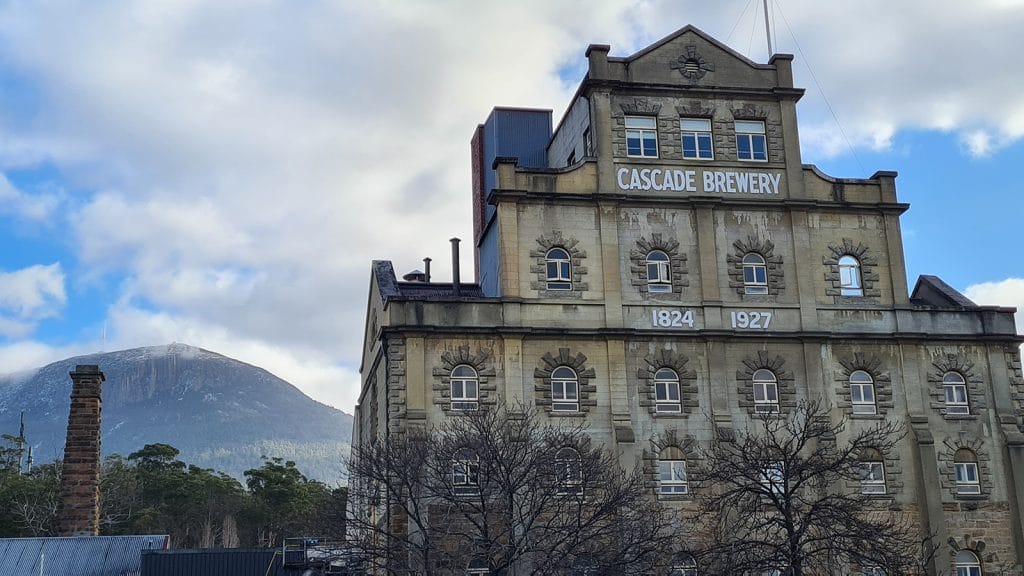
Mount Wellington
Drive or Hike: 21-km summit road (seasonal closures apply in winter) or choose from trails like the 6-hour Pinnacle Track.
Viewpoints: The Springs Lookout (1,100 m) and the summit platform (1,271 m) deliver 360° panoramas of Hobart, the Derwent River and beyond.
What to Pack: Layers—temperatures at the top are often 10–15 °C cooler than the city.

Where to go out and Events
Local bars & restaurants
For all exceptional events, do not hesitate to take a look at the newspaper “The Mercury” which is published every Friday.
Preachers (5 Knopwood Street): Here you have the choice between choosing a seat around the fire near the bar, going to the beer garden or even sitting on the bus parked in the garden.
Bar Wa Izakaya (216-218 Elizabeth Street): here the Tasmanian universe and that of Japan mingle. The bar specializes in sake, cocktails and beer.
Many other places are to be discovered in Salamanca Place, Elizabeth Street or Macquarie Street and Battery Point.
Events
Taste of Tasmania (Dec 28–Jan 3)
Tasmania’s largest food festival on Salamanca Lawns, showcasing regional produce, wines and craft beers.
In the same spirit, there is the Taste of the Huon in March in the Huon Valley.
Falls Festival: Outdoor rock, local and international artists.
Web : www.fallsfestival.com
Sydney to Hobart Yacht Race
Web : www.rolexsydneyhobart.com
Sculpture at Sullivans Cove (Jan–Mar)
Outdoor art trail featuring local and international sculptors.
Wooden Boat Festival (February – Every two years, odd years).
Maritime heritage races and demonstrations.
Web : www.australianwoodenboatfestival.com.au
Ten Days on the Island (March)
Cultural festival every 2 years (odd year) with concerts, dance, workshops
Web : www.tendaysontheisland.com
Dark Mofo (mid-June)
Winter festival of art, fire, music and feasting. Expect large-scale installations across Salamanca and Hobart’s waterfront.
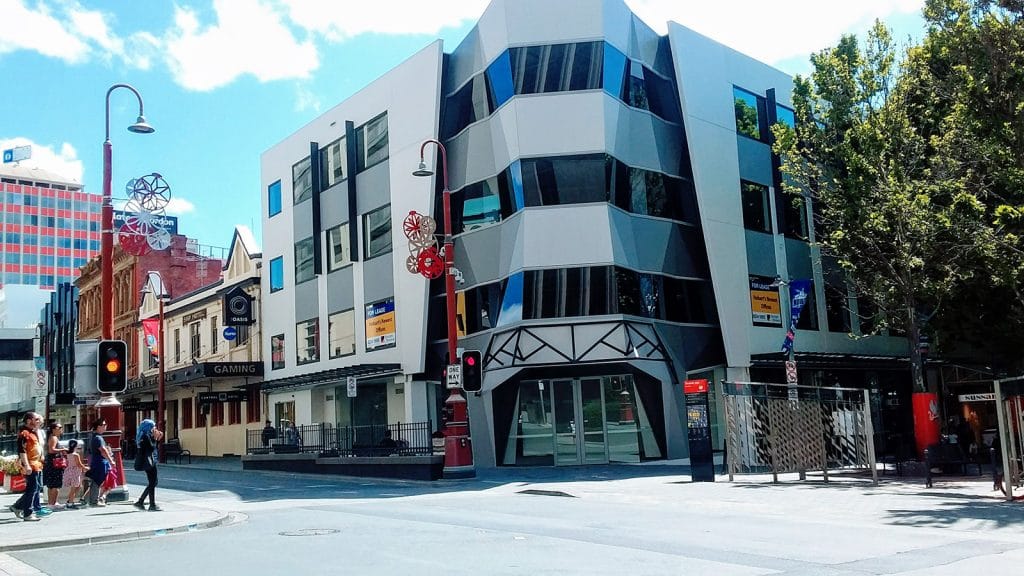
How to get Around?
You can easily walk around in the city centre.
Metro Tasmania buses cover the CBD and suburbs; day passes from AUD 10.
Hobart’s compact layout makes cycling a breeze; look for dockless e-scooters and bike-share schemes.
You can also decide to rent a campervan. If you plan to visit the region or do a road trip in Tasmania, you can compare the offers of different rental agencies on www.motorhomerepublic.com
🚐 Cheap Campervan Rentals
Ours tips and discounts to find the best deal for your rental
Accommodation Guide in Hobart
Caravan Park
The two best Caravan Parks in the capital are undoubtedly: BIG4 Hobart Airport Tourist Park ($40/night pitch with electricity or $140/night/2 people in a small cabin) and Snug Beach Cabin & Caravan Park (30 or 39 $/night for a pitch with or without electricity or $109/night/2 people in a small studio).
Backpackers Hotels
Otherwise, we recommend The Pickled FrogOpens from $30 per night in a dormitory (8 beds), $70 per night for a single room or Hobart Central YHA (from $25 per night in a dormitory (12 people) or $96 for a double room.
Camp spots
Finally, thanks to WikiCamps, you will have access to a map where all the free camps in the area are listed. Very practical!

Discover Hobart’s surroundings
Richmond
Just 20 minutes from Hobart, the Georgian-style village of Richmond was once a strategic military post.
Older than the historic site of Port Arthur, you see buildings built by convicts, including the oldest Catholic church in Australia.
Don’t miss the oldest bridge in the country across the Coal River. Built by the convicts in 1823, it is probably still haunted by Georges Grover. This prisoner was in charge of watching his fellow inmates and liked to see them suffer. One morning, during a dispute with another convict, he was murdered and his body was thrown from the bridge into the river.
Port Arthur & Tasman Peninsula
The Convict Trail to the east of Hobart takes you through historic towns to Port Arthur in the south of the Tasman Peninsula.
The Tasman Peninsula
The Tasman Peninsula is a stunning area in Tasmania. It shelters the famous historical site of Port Arthur and has impressive rock formations.
Among them, Tessellated Pavement, Blowhole, Tasman Arch or Devil’s kitchen, on the road to Port Arthur, are accessible by a short walk (10min).
Along the road, there is also the Tasmanian Devil Conservation Park, home to several Tassie devils. It’s possible to participate in the feeding of several animals including the Tasmanian devil! ($ 35/pers – open every day)
Port Arthur Historic Site (1.5-hr drive)
Port Arthur, located at the end of the Tasman Peninsula, is a historic site. You find the ruins of the penitentiary centre, chosen for its isolation, which has locked up the most dangerous criminals of the colony. As early as 1830, this site presented extremely difficult conditions of detention. Connected to the rest of the island by only a strip of land, Eaglehawk Neck, it was the perfect place to avoid prisoner escapes. Once a prisoner even tried to escape by putting on the skin of a kangaroo that he killed to deceive the guards!
Today, you can visit the ruins of the detention center. The penitentiary, a large building with beige walls was originally a flour mill that was converted into a prison. We then meet the ruins of the sinister hospital and those of the asylum (now a café).
Port Arthur will reveal to you the difficult living conditions of prisoners and the remarkable testimonies of the old prison.
Entry to the historic site is not free (ticket valid for 2 consecutive days): Pass 37 $ / pers includes access to the site with a guided tour and a boat tour from the port. You can choose activities such as the Ghost Tour (+ $ 25), Point Puer (+ $ 13).
If you want to take full advantage of the site, we advise you to take a Pass that include access to different activities (After Dark Pass for example).
You find more information about various tours on the Port Arthur website.
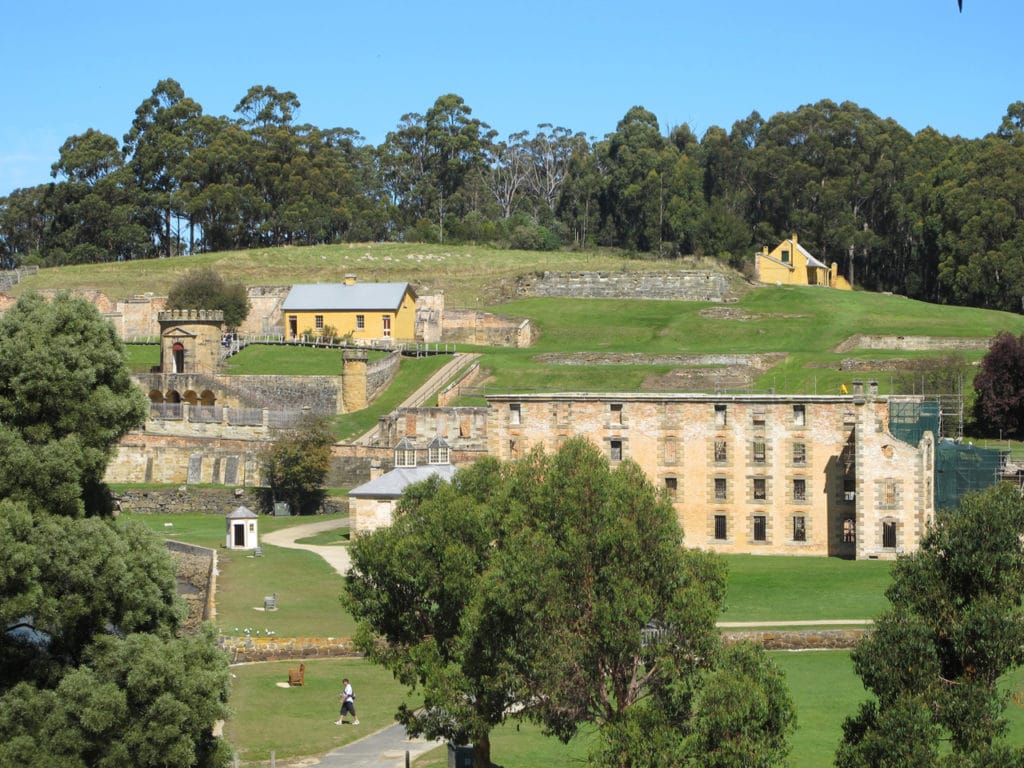
Mt Field National Park
This national park is particularly renowned for its beautiful mountains, rainforests, waterfalls, and wildlife. Situated only 80km north of Hobart, it is a perfect destination for a few days in nature.
At the Park Visitor Centre, you get a walking trail brochure. A short hike (20min) to Russel Falls (45m high) is accessible from the Visitor Centre.
Kingston
12km south of the capital, Kingston is part of the growing suburb of Hobart. This coastal town has a shopping centre and a nice beach, Kingston Beach.
You can also visit the Australian Antarctic Division, administering the land owned by the country on the polar zone, with a gallery explaining the expeditions, the flora and fauna of the Antarctic (Free – open from Monday to Friday)
Huon Valley
Huon River was explored in 1773 by Admiral Bruni d’Entrecasteaux and Captain Huon Kermandec, who gave their names to many sites in the region. The main town Huonville (2,000 inhabitants) is the starting point for exploring the region and for many backpackers a promising place to look for a fruit picking job. The town was traditionally the heart of the apple industry, but farmers in the region have now diversified to growing cherries, berries, peaches …
